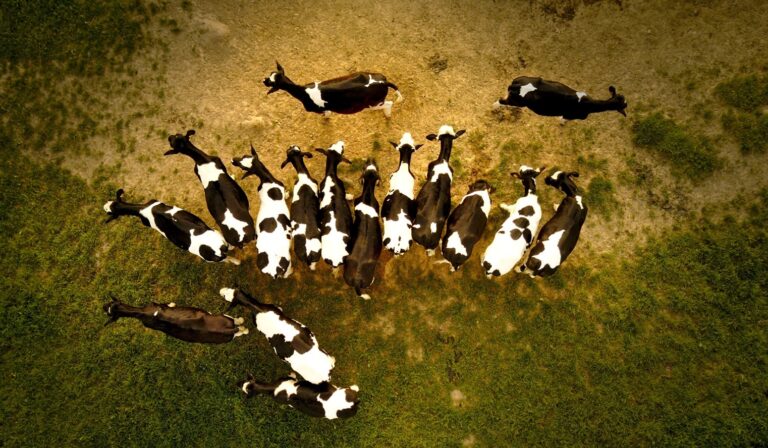Food consumption continues to grow. A quarter of global greenhouse gas emissions are now attributable to food production. Furthermore, with meat increasingly present on tables around the world, the sector is going in the opposite direction with respect to sustainability.
Table of Contents
The impact of food on the environment
Not all foods are the same. To produce one kilogram of beef, 60 grams of carbon dioxide are emitted, approximately three times more than a kilogram of cheese. Not to mention a kilogram of peas, which emits only 900 grams of CO2. Even looking at water resources, the necessary consumption for products of animal origin (and meat in particular) is much higher than that for vegetables.
Food production is a major source of greenhouse gas emissions, contributing more than 25% to the global problem. A significant aspect of this environmental impact is represented by CO2 emissions, with the food sector responsible for 26% of total emissions.
In addition, livestock farming is estimated to cause half of the methane emissions and almost all of the ammonia emissions attributable to human activities. Ammonia, in addition to being harmful to the environment, is associated with the formation of fine dust, which causes air pollution, with tragic consequences – an estimated 7 million premature deaths every year.
Methane emissions – one of the gases with the highest environmental impact – have grown by 262% compared to pre-industrial levels. This gas, however, has a relatively short life, between ten and twenty years, much less than the hundreds of years of CO2. This means that changing your eating habits can have a significant impact on reducing greenhouse gas levels.
The choice of diet, reducing or eliminating animal products, would therefore have a significant and, potentially, rapid impact.
Differences in resource consumption: the weight of meat
As anticipated, however, not all food is the same when it comes to environmental impact. Meat stands out as having a greater impact than dairy and plant-based products. Data on CO2 emissions to produce 1 kg of food clearly highlights this disparity:
- Beef: 60 kg CO2
- Lamb: 24 kg CO2
- Cheese: 21 kg CO2
- Palm oil: 8 kg CO2
- Chicken: 6 kg CO2
- Eggs: 4.5 kg CO2
- Milk: 3 kg CO2
- Soy milk: 0.9 kg CO2
- Peas: 0.9 kg CO2
- Apples: 0.4 kg CO2
- Tubers: 0.4 kg CO2
The intensive use of resources
Food production requires an immense amount of natural resources. About 50% of the planet’s habitable land is devoted to agriculture, with 77% of this land used for grazing and growing animals. The direct consequence is deforestation, which is increasing to make room for new crops.
Water use is also critical. 70% of freshwater consumption is attributable to agriculture, with impressive numbers such as 21,000 liters to produce 1kg of beef and 16,000 liters for cereals.
The massive use of chemicals, such as pesticides, antibiotics and hormones, not only threatens human health but contributes to 78% of the pollution of oceans and freshwater resources.
Reduce the impact of food
The solution to mitigating the environmental impact of food production is clear: reducing or eliminating the consumption of meat and cheese can have a significant impact on greenhouse gas emissions. The choice of diet really makes the difference:
- Carnivora light (reduced consumption of meat and dairy products): 3.5 billion tonnes of CO2 avoided;
- Pescetarian (without meat): 4 billion tons of CO2 avoided;
- Vegetarian: 6 billion tons of CO2 avoided;
- Vegan: 8 billion tons of CO2 avoided or sequestered.
Investing in the future of food
In light of the environmental and health crises, the global food system must adapt. And three opportunities could open up for investors.
Firstly, given the enormous pressure placed on the environment by food production, there is considerable scope for companies to help improve the sustainability of production and consumption systems throughout the supply chain, from farm to fork. Precision agriculture, animal and plant health products and solutions to manage food waste are experiencing strong growth.
The second opportunity is the growing demand for healthier foods. Science and technology have led to greater awareness of the health impact of a poor diet. Governments are introducing measures requiring new formulas for food and drink products to reduce the amount of sugar, salt and saturated fat. Consumers, meanwhile, are turning to foods and supplements with specific functional benefits, such as strengthening the immune system.
Finally, technological advances are opening up new investment opportunities in food e-commerce, personalized nutrition and food traceability.
Read also: Beef, plant-based or cultivated: what is the climate impact of a burger?












